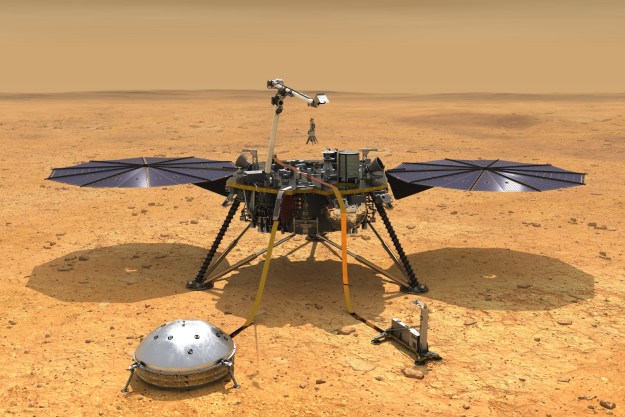One undeniable fact about space exploration is that it isn’t cheap. For example, NASA’s most recent Mars rover, Perseverance, cost $2.7 billion to build and launch to the red planet. But is there a way to explore Mars for cheaper? A new project from the University of California, Berkeley aims to try this out.
Berkeley and the company Rocket Lab will build two satellites for NASA called Blue and Gold and put them into orbit around Mars with the aim of studying the planet’s climate history, under the Escape and Plasma Acceleration and Dynamics Explorers (ESCAPADE) mission. The mission, led by the university’s Space Sciences Laboratory, aims to develop, build, test, and launch them both for just $80 million, a fraction of the cost of a typical Mars mission.

One big factor in the cheaper cost is the fact the mission aims to go into orbit rather than land on the planet, which is — relatively speaking — a much easier task. However, the cost is very low even for an orbiter. For comparison, NASA’s Mars Atmosphere and Volatile EvolutioN (MAVEN) orbiter cost $580 million and the Mars Reconnaissance Orbiter cost $720 million.
The ESCAPADE mission uses a different approach to Mars exploration than the one taken by NASA currently. Current NASA missions aim to be very reliable, with multiple backups and redundant systems in case anything goes wrong — which is why you get successes like the Opportunity rover, which was supposed to last for three months but ended up running for 15 years. However, this approach drives up costs.
The new satellites will instead be cheaper but riskier, representing “a new commercial, higher risk, high reward way of doing things,” mission leader Robert Lillis explained in a statement. “Instead of spending $800 million for a 95% chance of success, can we spend $80 million for an 80% chance? This is what NASA is trying to find out with these missions, and we are lucky to be one of the guinea pigs.”
NASA has tried a similar approach in the past with its Faster, Better, Cheaper philosophy in the 1990s which included the Mars Polar Lander and Mars Climate Observer missions, but both of these missions failed to land safely on Mars. However, with developments in technology in the last 30 years, plus considerably more knowledge about conditions in the martian environment, the Berkeley team thinks the time is right to try again.
“ESCAPADE and two other NASA missions recently approved are experiments to see whether advances in the space industry over the last five to 10 years can translate to a much better bang for the buck in terms of science per dollar,” said Lillis. “Sending two spacecraft to Mars for the total cost of under $80 million is just unheard of, but current NASA leadership is taking the risk.”
Editors' Recommendations
- NASA needs a new approach for its challenging Mars Sample Return mission
- Perseverance rover’s Mars oxygen machine comes to the end of its mission
- Curiosity rover battles up a 23-degree slope in its exploration of Mars
- Perseverance rover finds evidence of an ancient river on Mars
- Rovers could explore lava tubes on Mars or the moon using breadcrumbs




